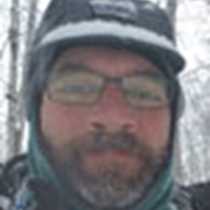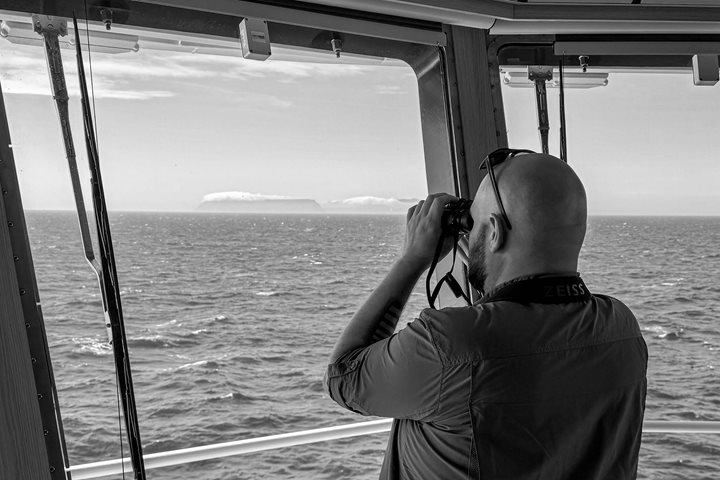As we continue our west to east transit of the Northwest Passage, the day was spent searching for the edge of the sea ice, which by this time in the season has receded north some 60 nautical miles off the coast of Alaska. By using satellite imagery and ice forecast data, we were able to position ourselves alongside a large floe of sea ice just after breakfast. With eyes peeled and glued to binoculars and spotting scopes, the anticipation of finding a polar bear was palpable on the bridge and observation decks. By 0900, we had not seen any of the white denizens of the sea ice. A scheduled bit of administrative work had to be accomplished before we enter Canadian waters tomorrow morning, so we all gathered in the main lounge to fill out our Canadian Customs declaration forms. Just as that small task was concluding, a radio call from the bridge alerted us that indeed a polar bear had been spotted. The bridge team quickly brought National Geographic Endurance about, and in a relatively short time, the bridge was bustling with excitement as we all got our first looks at a lone bear making its way over the sea ice. Though the bear was in the distance and occasionally shrouded by a thick fog layer, we all got a wonderful opportunity to appreciate this magnificent creature in its natural habitat. We left the bear to its wanderings and made our way farther east.
Undersea specialist and naturalist James Hyde was providing us with a wonderful introduction to basic earth sciences and natural history. Somewhere around the Cambrian, James’ expedition dive partner and naturalist Christine West exclaimed, “Bear!” Sure enough, on a large floe of ice off the starboard side, a polar bear was lounging about on the ice. Needless to say, this abruptly halted the presentation. We all hurried to grab cameras, coats, and hats, and we headed to various observation areas of choice. The bear was casually resting on a small rise on the ice and hardly took notice of our presence. An intermittent blanket of fog obscured the bear, but it remained visible for the most part, eventually getting to its feet and very casually strolling about on the ice. The sighting lasted for nearly an hour, and eventually we opted to leave the bear as she made her way along the ice.
The conclusion of James’ lecture came just before lunch. After lunch, archeologist Natasha Slobodina led two separate groups of guests on guided tours of the curated art exhibit on board National Geographic Endurance. A little later in the afternoon, geologist Joe Holladay gave a lecture on the geology and glaciology of Alaska. The day concluded with clearing skies. As we sailed eastward along the coast of Alaska, the coastal Brooks Range peaks, still snowcapped, made for a wonderful salute to our pending departure of Alaskan waters.







